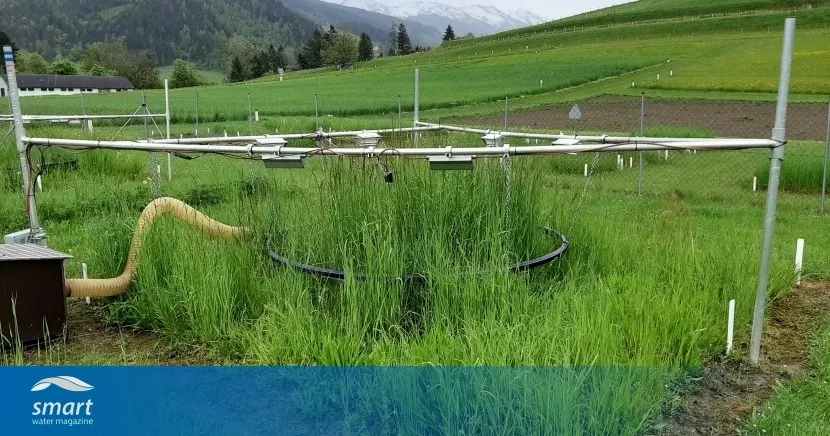
Shocking Study Unveils Climate Change's Devastating Impact on Grassland Ecosystems!
2025-01-20
Author: Charlotte
Groundbreaking Research Overview
Recent groundbreaking research, led by the University of Maryland in collaboration with the University of Innsbruck, has revealed alarming evidence about how climate change is set to transform the hydrology of grassland ecosystems. These ecosystems, which occupy nearly 40% of the Earth's land surface, play an indispensable role in regulating the planet's water cycle.
Significance of the Study
In the highly anticipated study published in the January 17, 2025 issue of Science, lead author Jesse Radolinski, a post-doctoral research associate at UMD, details the profound consequences of rising temperatures and increasing CO2 levels on water movement in grasslands. "To truly understand the impact of climate change on global water resources, we require comprehensive data at a micro-level," Radolinski explained, emphasizing the need for focused small-scale studies that have been previously lacking.
Key Findings
The research demonstrated two critical changes under projected future climate scenarios characterized by drought and elevated temperatures. Firstly, alterations in soil structure within the root zone lead to unexpected changes in water flow. Secondly, plants begin to tap into soil moisture differently, raising concerns about the long-term sustainability of these crucial ecosystems.
Experimental Setup
In their experimental setup, researchers created a simulated environment in open plots within an Austrian grassland. By artificially manipulating climate conditions to simulate six scenarios with varied air temperatures and CO2 levels, the team could observe how these grasslands react to severe droughts. Rainfall was simulated using water tagged with a stable isotope, deuterium, allowing scientists to meticulously track its movement through the soil and plants.
Shockingly Altered Water Dynamics
One of the startling findings indicates that after experiencing recurrent droughts in plots with heightened CO2 and warming, the soil's pore structure underwent a transformation: older, stored water became trapped within smaller pores, while new water drained quickly through larger pores. This dynamic shift indicates that rainfall could bypass interactions with existing moisture, potentially slashing the quality of water that eventually reaches local streams and rivers by carrying along both nutrients and pollutants.
Impacts on Plant Behavior
Additionally, under these altered conditions, the plants demonstrated an impressive ability to preserve water. By reducing their transpiration rates, they conserve moisture which could drastically hinder atmospheric cooling, leading to a vicious cycle of drought and escalating temperatures.
Urgent Call for Further Research
These revelations not only cast a shadow over the future viability of grassland ecosystems but also raise urgent questions about the consequences for global water resources and agricultural paradigms, especially in drought-prone regions. Experts urge that this preliminary study calls for deeper exploration into the effects of climate change on plant growth and overall ecosystem health to prepare for the inevitable challenges ahead.
Conclusion and Future Actions
As climate change continues to escalate, understanding these dynamics will be crucial in shaping conservation strategies and ensuring the resilience of grassland ecosystems—and ultimately, the well-being of our planet. Will we act in time to safeguard these vital resources? Only the future can tell!









 Brasil (PT)
Brasil (PT)
 Canada (EN)
Canada (EN)
 Chile (ES)
Chile (ES)
 Česko (CS)
Česko (CS)
 대한민국 (KO)
대한민국 (KO)
 España (ES)
España (ES)
 France (FR)
France (FR)
 Hong Kong (EN)
Hong Kong (EN)
 Italia (IT)
Italia (IT)
 日本 (JA)
日本 (JA)
 Magyarország (HU)
Magyarország (HU)
 Norge (NO)
Norge (NO)
 Polska (PL)
Polska (PL)
 Schweiz (DE)
Schweiz (DE)
 Singapore (EN)
Singapore (EN)
 Sverige (SV)
Sverige (SV)
 Suomi (FI)
Suomi (FI)
 Türkiye (TR)
Türkiye (TR)
 الإمارات العربية المتحدة (AR)
الإمارات العربية المتحدة (AR)